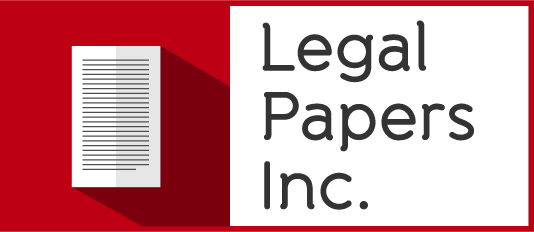When Katerina Juskey and Victoria Mierzwa launched candle company LOHN in February, 2020, it was challenging enough to manufacture and market at the beginning of a pandemic. Now, like so many small and medium-sized businesses (SMBs) in Canada, the big challenge is financing as they continue to expand.
“The financing options can be pretty stark. We’ve been banking with the same bank for the last five years and we haven’t been able to increase our line of credit,” says Ms. Juskey, whose fragrant products – LOHN means “scent” in Estonian – are now in some 200 retailers across North America. The company is looking to serve its expanding customer base and markets.
“We’re exploring different banks. One offered us three times the line of credit as our [current] bank, at better interest rates. They’re also connecting us with a specialist who can help us find other funding sources, such as an online hub that helps locate grants for businesses.”
SMBs must be especially nimble at financing in today’s economy, which is still shaking off the pandemic and has since seen inflation and interest rates soar.
“Businesses are still reeling,” says Simon Gaudreault, chief economist and vice-president of research at the Canadian Federation of Independent Business (CFIB). Statistics Canada reports that in 2022, Canada’s consumer price index was up 6.8 per cent on an average annual basis – a 40-year high – however, it has eased slightly with May’s CPI up 3.4 per cent year over year.
At the same time, the Bank of Canada’s key lending rate has climbed from 0.25 per cent in March, 2022, to 4.75 per cent today.
“Our monthly business barometer tracks whether borrowing costs are causing difficulty. Historically, about one business in five in Canada had issues with borrowing, but that share has doubled. In May, 39 per cent said they were in some trouble, and three months earlier 12 per cent described their debt as ‘business threatening,’” Mr. Gaudreault says.
The burden is heightened for many businesses because a COVID-era avenue for financing, the federal government’s Canadian Emergency Business Account, is now asking those who received interest-free funding to pay back their loans by the end of the year or start paying 5-per-cent interest starting in January.
“A quarter of a million businesses are going to miss the interest-free deadline,” Mr. Gaudreault says. CFIB has asked the federal government to extend the interest-free period but it has not received confirmation.
CFIB is releasing a survey in July as part of a series it conducts every three years on the banking climate for SMBs in Canada. Whether they’re struggling or, like LOHN, are well-established and poised to grow, businesses need to be especially nimble in their quest for financing, Mr. Gaudreault says.
“Most businesses still rely on traditional financing – term loans and lines of credit from banks,” he says. The problem, as Ms. Juskey at LOHN finds, is that not only have the rates become steep, the lines of credit available are not necessarily sufficient for some businesses to thrive.
“Business people feel like they have to sign away their whole lives these days just to get a loan. They have to borrow to keep cash flow going because those who owe them money aren’t paying so fast,” says Isabelle Rader, an Oakville, Ont.-based bookkeeper who works with SMBs.
“People are going into overdraft, which isn’t cheap, and a lot of businesses are actually using credit cards, which have really high interest rates,” she explains. “There aren’t a lot of alternatives, but there are a few.”
Some businesses finance through credit unions, which are not-for-profit, for example, and Ms. Juskey says another good place to turn is BDC – the Business Development Bank of Canada.
“BDC’s process for applying is really easy – a quick online application that takes maybe five or 10 minutes. It’s an open loan that can be repaid any time without penalty and we received the funds within five business days of being approved. The interest rates they’re providing right now are not necessarily cheap – about 11.77 per cent – but that’s what happens given the times we’re in. You have to watch your expenses.”
Some businesses are looking to venture capital firms for financing, but Ms. Juskey says LOHN has yet to go this route. She and her co-founder aren’t ready to take in equity partners. “We’ve thought about it, but we’re not at that point yet.”
Her advice to businesses that need financing in this high-interest, high-inflation economy is as follows:
- If you need financing, look to online services such as Grant Match, a hub that helps paid subscribers identify government grants and incentive programs that may fit their needs. “Our company wants to support women studying STEM (science, technology, engineering and math) courses, so a hub like this helps us identify programs that subsidize hiring students, for example,” she says.
- Consider online borrowing – “If you’re a Shopify merchant, you can get funds from them within a day. It’s a quick and easy process, though it’s not cheap. It’s an option if your business is desperate for funding,” Ms. Juskey says.
- Get your documentation in order. Regardless of where a business seeks financing, Ms. Juskey says “the lenders ask for everything now – not just details of your business but also your personal assets and liabilities. It helps to get everything ready before you’re looking for financing.”
Most importantly, she adds, stick to business. “We have six employees. Hold onto and take care of your good people. They’ll keep you sane. Remember, everyone is finding that everything is expensive right now.”
https://www.theglobeandmail.com/business/small-business/article-how-growing-businesses-secure-financing-in-todays-tough-economy/

